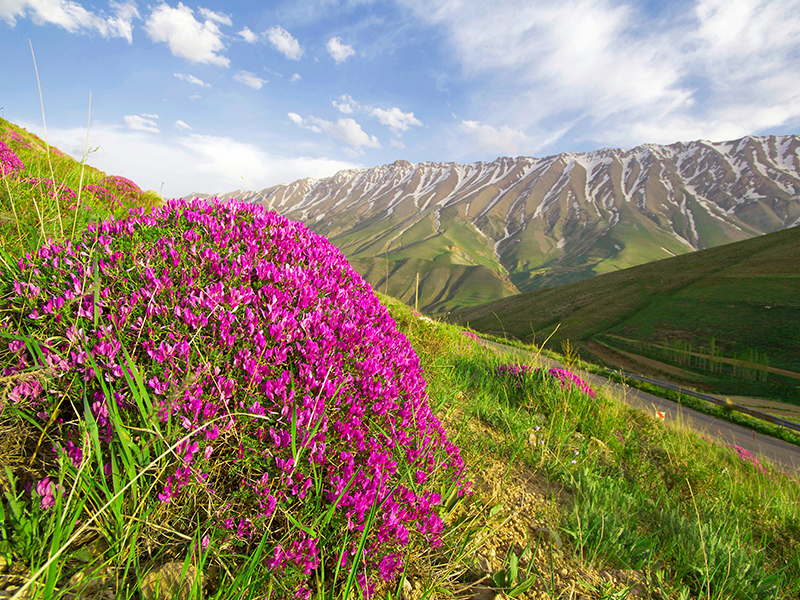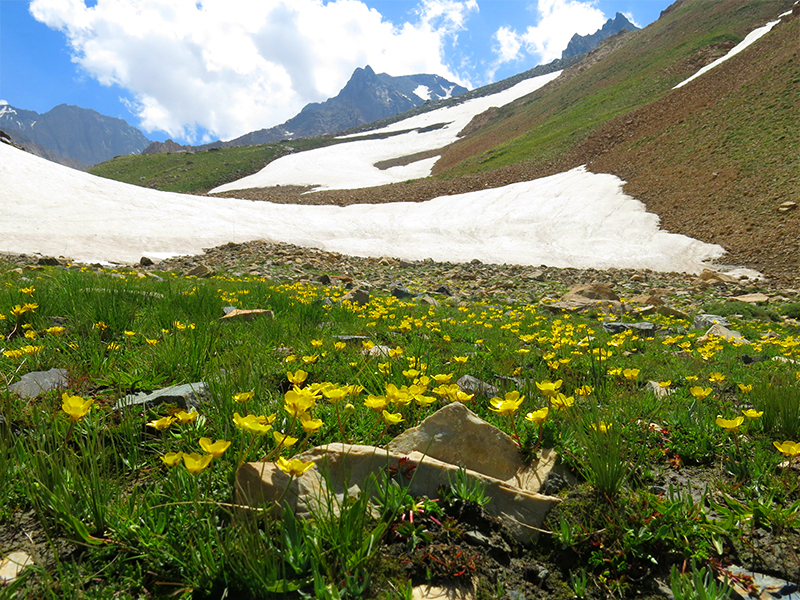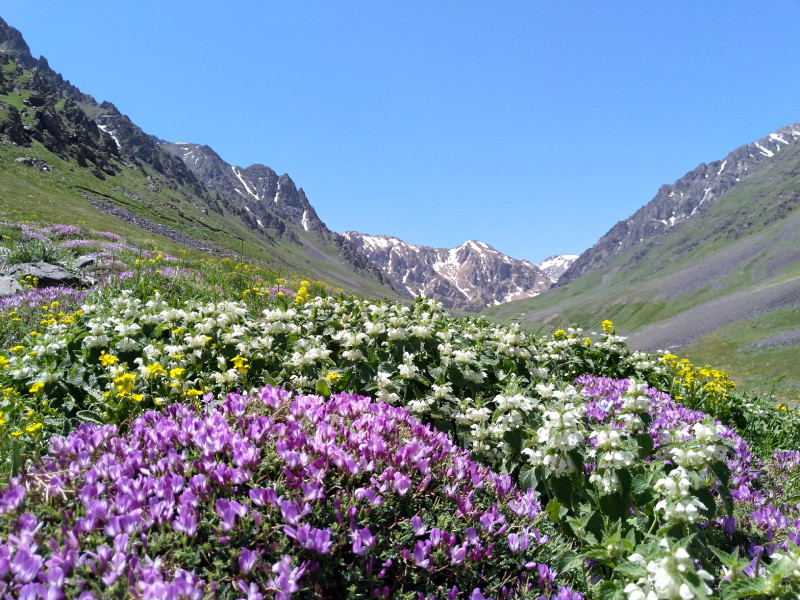Alam Kuh (Weather, Elevation, Photos, Difficulty, How to Get)
Alam Kuh, known as the “Diamond of the Alborz” mountain range, is a majestic peak in the heart of Iran. Alam-Kuh stands as one of the tallest and most challenging peaks in the country. Its awe-inspiring beauty, rugged terrain, and unique climbing opportunities have captivated mountaineers and adventurers from around the world. In this article, we will delve into the rich history, stunning geography, and thrilling experiences that await those who dare to conquer the magnificent Alam Kuh. To have a Mount Alam kuh complete guide, stay with us until the end of this article.
Alam Kuh Mountain Height
Alam Kuh, also known as the Alps of Iran, is the second-highest summit of Iran and the Middle East. It has a height of 4,850 meters (15,912 feet). It is one of the highest peaks in the Alborz mountain range, located in the Mazandaran province of northern Iran. Standing tall and majestic, Alam Kuh is renowned for its challenging climbing routes, stunning alpine landscapes, and captivating natural beauty. Its impressive height attracts mountaineers and adventurers from around the world, seeking to conquer its summit and experience the thrill of scaling this alpine wonder.
Where is Alam Kuh?
Alam Kuh location in the Alborz mountain range contributes to its captivating beauty (Alam Kouh on Google Maps). The range stretches from the western border of Iran to the eastern shores of the Caspian Sea, offering breathtaking vistas of lush green valleys, cascading waterfalls, and picturesque alpine meadows. The combination of dramatic mountain scenery and vibrant landscapes creates an enchanting setting for outdoor enthusiasts and nature lovers.
Natural Wonders and Biodiversity of Alam Kuh
Beyond the thrill of mountaineering, Alam Kuh is home to a rich and diverse ecosystem. The mountain’s slopes are adorned with a variety of flora and fauna, making it a paradise for nature enthusiasts. As climbers ascend the peak, they are greeted by stunning alpine meadows adorned with vibrant wildflowers, adding a splash of color to the rugged landscape.
The region surrounding Alam Kuh boasts an impressive range of wildlife, including Persian leopards, brown bears, ibex, and numerous bird species. The untouched natural habitats in the area contribute to the preservation of these animals, making it a vital conservation site.
Cultural Significance of Alam Kuh
Alam Kuh holds immense cultural significance for the people of Iran. The mountain has deep roots in Persian mythology and folklore, often associated with tales of heroism, spirituality, and adventure. It serves as a symbol of national pride and unity, inspiring a sense of awe and respect among Iranians.
The surrounding region is home to several small villages, each with its own distinct culture and traditions. Visitors to Alam Kuh have the opportunity to immerse themselves in the warm hospitality of the local communities, experiencing their unique way of life and enjoying traditional cuisine.
Climbing Alam Kuh
Alam Kuh presents a formidable challenge for mountaineers, attracting experienced climbers who seek a thrilling expedition. Its steep and technical routes demand advanced mountaineering skills, making it a popular training ground for those preparing for even more demanding ascents, such as the Himalayas.
Alam Kuh is also renowned for its prominent rock climbing opportunities. The Alam Kuh wall, with its sheer vertical face, has become a magnet for rock climbers seeking an adrenaline-pumping challenge. The rugged cliffs and challenging routes provide a playground for climbers of all skill levels, from beginners to seasoned professionals.
Alam Kuh Routes
There are many ways and routes to conquer this magnificent mountain. Here are 4 routes we briefly explained for a better overview.
Hesarchal/Alamchal Glacier Route
The Hesarchal Glacier, also known as the Alamchal Glacier, is the most commonly used route to ascend Alam Kuh. This route begins from Vandarbon village and takes climbers through a series of steep slopes, narrow ridges, and icy sections.
Takht-e-Soleiman Route
This route begins from the village of Tang-e Galoo and leads climbers through scenic alpine meadows, steep ridges, and rocky sections. It presents breathtaking views of the surrounding peaks and valleys. The route requires technical climbing skills, including proper use of ropes and safety equipment. It is less frequently used compared to the Hesarchal Glacier route but offers a rewarding and challenging ascent.
Sarchal Route
The Sarchal route is a less technical and more straightforward option to climb Alam Kuh. It starts from the village of Vandarbon and follows a path that is relatively less steep compared to other routes. However, climbers still need to navigate through rocky terrain and cross the Sarchal River. This route is ideal for climbers with moderate mountaineering experience who seek a less demanding ascent.
Northeast Ridge Route
The Northeast Ridge route is known for its technical difficulty and is recommended for experienced climbers. Starting from the village of Tang-e Galoo, this route involves traversing along the northeast ridge of Alam Kuh. Climbers will encounter steep sections, exposed ridges, and challenging rock formations. It requires advanced mountaineering skills and experience in handling complex climbing situations.
Necessary Supplies to Climb Alam Kuh
1. Climbing equipment: This includes a helmet, harness, ice axe, crampons, ropes, carabiners, slings, and ascenders/descenders.
2. Mountaineering boots: Sturdy and waterproof boots are essential for climbing in rocky and icy terrain.
3. Clothing: Layered clothing is crucial to protect against extreme temperature changes. This includes thermal base layers, insulated pants and jackets, waterproof and windproof outer layers, gloves, hats, and gaiters.
4. Camping gear: A lightweight tent, sleeping bag, and sleeping pad are necessary for overnight stays on the mountain.
5. Food and water: High-calorie and lightweight food options such as energy bars, dried fruits, nuts, and freeze-dried meals are recommended. Sufficient water supply or a water purification system is essential.
6. Navigation tools: A map, compass, and GPS device are vital for route finding and navigation.
7. First aid kit: A well-stocked emergency kit with essential medical supplies for treating injuries, altitude sickness, and other medical emergencies.
8. Personal care items: Sunscreen, lip balm, sunglasses, trekking poles, headlamps, hand warmers, and toiletries.
9. Communication equipment: A fully charged mobile phone, satellite phone, or two-way radio for emergency communication.
10. Technical gear: For some routes and conditions, additional technical gear, such as ice screws, snow pickets, and snowshoes, may be required.
It is important to note that climbing Alam Kuh is a serious undertaking, and climbers should have previous mountaineering experience, physical fitness, and the necessary skills to navigate and handle technical challenges. Professional instruction and local guides are highly recommended for a successful and safe climb.
Safety Considerations
As with any mountain expedition, climbers must prioritize safety when attempting to summit Alam Kuh. The challenging terrain, unpredictable weather conditions, and high altitude demand careful planning, physical fitness, and proper equipment. It is crucial to have an experienced guide and to adhere to all safety protocols to ensure a successful and secure ascent.
The Best Time to Climb the Summit of Alam Kuh
The best time to climb the summit of Alam Kuh is during the summer months, from June to September (Alam kuh Weather). This is because the weather conditions are typically more stable during this time, with less snow and ice on the mountain. The temperatures are also more moderate, making it easier to climb and navigate the mountain. In the autumn and winter seasons, Alam Kuh is associated with heavy snow, storms, and successive avalanches, which make it very difficult to climb. This condition persists in spring.
The Best Time to Ski in Alam Kuh
The best time to ski in Alam Kuh is during the winter months, typically from December to March. This period provides the most favorable snow conditions for skiing and snowboarding activities in the region. However, it’s important to note that the weather in mountainous areas can be unpredictable, so it’s essential to monitor weather forecasts and local conditions before planning your trip.
The popularity of skiing in Alam Kuh has been increasing, particularly among local enthusiasts. If you prefer quieter slopes, consider visiting during weekdays or less busy periods. Weekends and holiday periods may attract larger crowds.
Alam kuh Trekking Season
The trekking season in Mount Alam kuh typically spans from late spring to early fall, specifically from May to October. During this period, the weather conditions are generally more favorable and conducive to trekking in the region.
In the early spring months, from April to May, the mountainous terrain may still be covered in snow, especially at higher elevations. As the season progresses into late spring and early summer, the snow begins to melt, revealing the lush greenery and alpine meadows that adorn the landscape.
Summer, from June to August, is considered the peak trekking season for Alam Kuh. During this time, the weather is generally warm, and the trails are more accessible. The days are longer, allowing for extended hiking hours and ample time to explore the surrounding natural beauty.
Final Word
Alam Kuh stands as a beacon of natural beauty, adventure, and cultural significance in Iran. With its towering peak, breathtaking scenery, and challenging climbing routes, it has rightfully earned its place as a must-visit destination for mountaineers and nature enthusiasts. Exploring the majestic beauty of Alam Kuh offers a unique opportunity to push personal limits, immerse oneself in stunning landscapes, and experience the warm hospitality of the local communities. As you stand atop this alpine wonder, gazing at the world beneath you, you will undoubtedly be forever captivated by the awe-inspiring grandeur of Alam Kuh.
Are you planning to travel to Iran? Check out our Iran tours and Iran Climbing tour.










Leave a Reply
Want to join the discussion?Feel free to contribute!